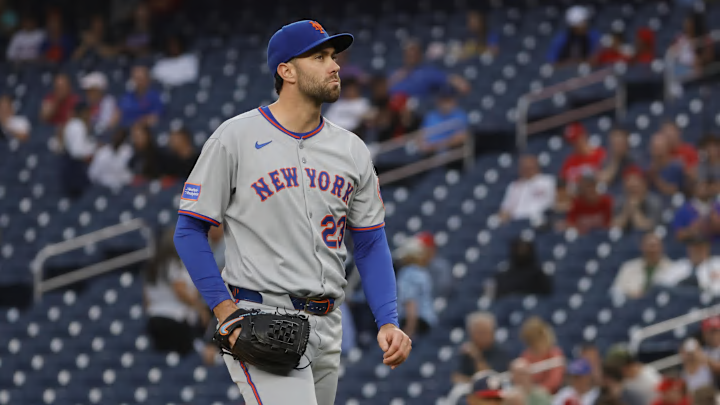Even when the New York Mets are in the middle of a promising stretch, there’s a peculiar knot in the stomach that only fans seem to understand. You watch a pitcher rise, a season glittering with potential, and somewhere around the dog days, the unthinkable happens: the brilliance fades. David Peterson gave us that feeling in 2025. One month he’s an All-Star, the next he’s a reminder of how quickly things can slip.
Peterson’s first half felt like the kind of story every Mets fan wants to tell their friends. Command sharp, velocity humming, hitters guessing — he was a headline waiting to be written. Then came July, then August, and the magic slipped like sand through fingers. It wasn’t just numbers tanking; it was the gut punch of familiarity. Mets fans have seen this before, and the ghost of the 2021 season looms large.
David Peterson’s slump has Mets fans recalling Taijuan Walker’s 2021 fade.
If the first half of 2025 felt like Peterson’s arrival, the second half reminded everyone that the script was strangely familiar. He opened the year like a frontline arm — 18 starts, a 3.08 ERA, 93 strikeouts in 109 innings, 11 quality outings, and a microscopic 0.58 home runs per nine, all of which earned him his first All-Star trip. Everything about his season said breakout. Then came the back half. Twelve starts later, his ERA sat at 6.34, with 68 hits and 28 walks allowed in just under 60 innings. It wasn’t just regression, it was déjà vu.
In 2021, Walker’s first half looked eerily similar: a 2.50 ERA, 89 strikeouts in 90 innings, and a steady hand that helped anchor the rotation. He earned an All-Star appearance of his own before watching it all unravel in the second half. His ERA ballooned to 7.13, hitters crushed 20 home runs off him, and a season that began with celebration ended in exhaustion. Peterson’s 2025 mirrored it nearly pitch for pitch, a near-perfect sequel to a summer Mets fans tried to forget.
Walker, though, managed to turn it around the following season. Heading into 2022, he changed how he attacked hitters, doubling his splitter usage from 14 to 28 percent and holding opponents to a .195 average against the pitch. The tweak gave him a steadier 3.49 ERA and a stronger finish to the year. For Peterson, that’s the model: identify what works, lean on it more, and learn from how Walker reshaped his approach after a similar collapse.
Peterson’s own numbers show where to start. His four-seamer took the beating, hit at a .308 clip with a -7-run value. His slider, meanwhile, improved year over year, dropping from a .287 to .228 BAA and climbing from -4 to neutral in run value. His sinker allowed slightly more hits but still carried a +6 run value, thanks to a top 10% ground ball rate in MLB.
The foundation is there, and if Peterson studies the right lessons from Walker, maybe history can repeat itself again, just in the better half of the story this time.
